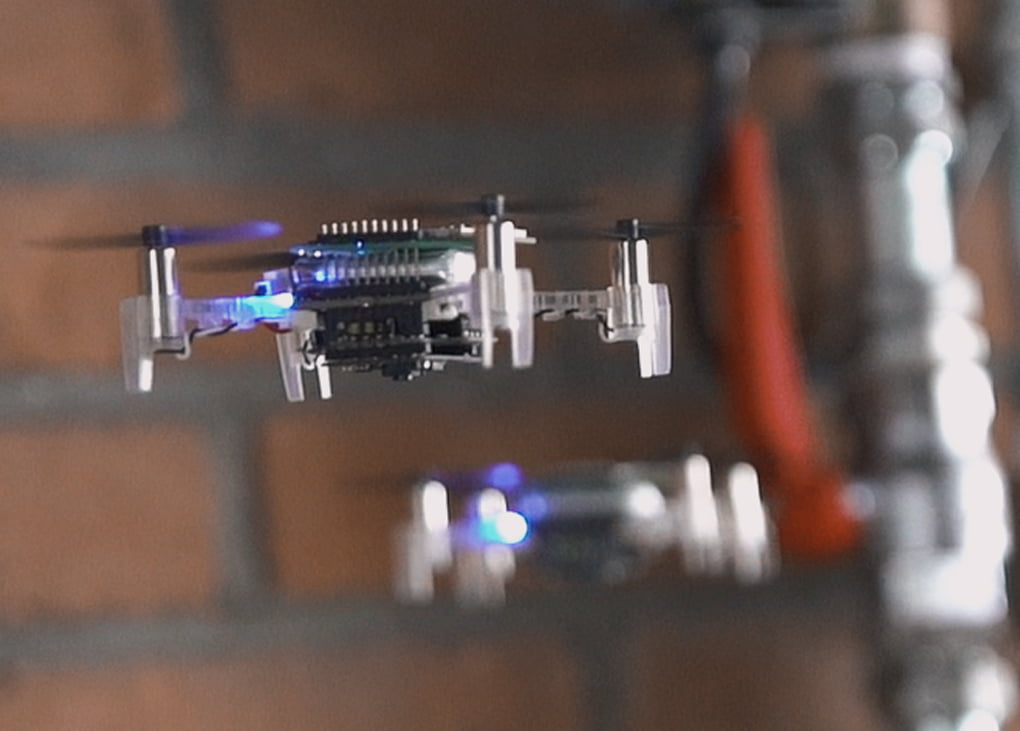Researchers at the Delft University of Technology in the Netherlands have developed a swarm of tiny drones that can autonomously detect and localise gas sources in cluttered indoor environments.
One of the key challenges the researchers faced was the minimal processing capacity of the drones. They overcame this by using bio-inspired navigation and search strategies.
“Drones measure the PPM (parts-per-million) of the gas at their position,” says Guido de Croon, Full Professor at the Micro Air Vehicle laboratory of TU Delft. “We use a threshold on the PPM to mark the first detection of the gas, but after that the drones communicate the PPMs to each other. In this way they try to find the maximum concentration in the environment.
“The swarm copes with this in a ‘wisdom of the crowd’ manner, by locating the gas in a collaborative fashion. When one drone senses a gas, it communicates with the others to help locate the source of the gas.”
The technology has been highlighted as a lifesaver in situations where leaking gas is flammable and could put firefighters at risk. But it also could have applications for finding refrigerant leaks in large commercial and industrial premises.
“The current gas sensor on the drone detects gases like alcohol and carbon monoxide,” says de Croon. “However, the concept can be applied to any gas for which small sensors exist. For refrigerant gases, many gas sensors already exist that could be integrated in our design. There are also new types of odour sensors in development, called e-noses, that will further extend the range of smells that can be detected.”
One of the next steps for the project is to ensure the drones cannot produce any sparks. This means that the drones have to be certified by ATEX – the European directives for controlling explosive atmospheres.
The team is also looking to improve the autonomous obstacle detection.
“In our experiments, the drones were equipped with four tiny lasers,” says de Croon, “but for avoiding any kind of obstacle, we think an additional camera system would give extra robustness. Both factors will make the drones slightly bigger, but the bio-inspired AI we made will keep the design as small as possible, so that they are safe for use around humans.”
To read more, click here.
 Mark Vender
Mark Vender


Leave a Reply